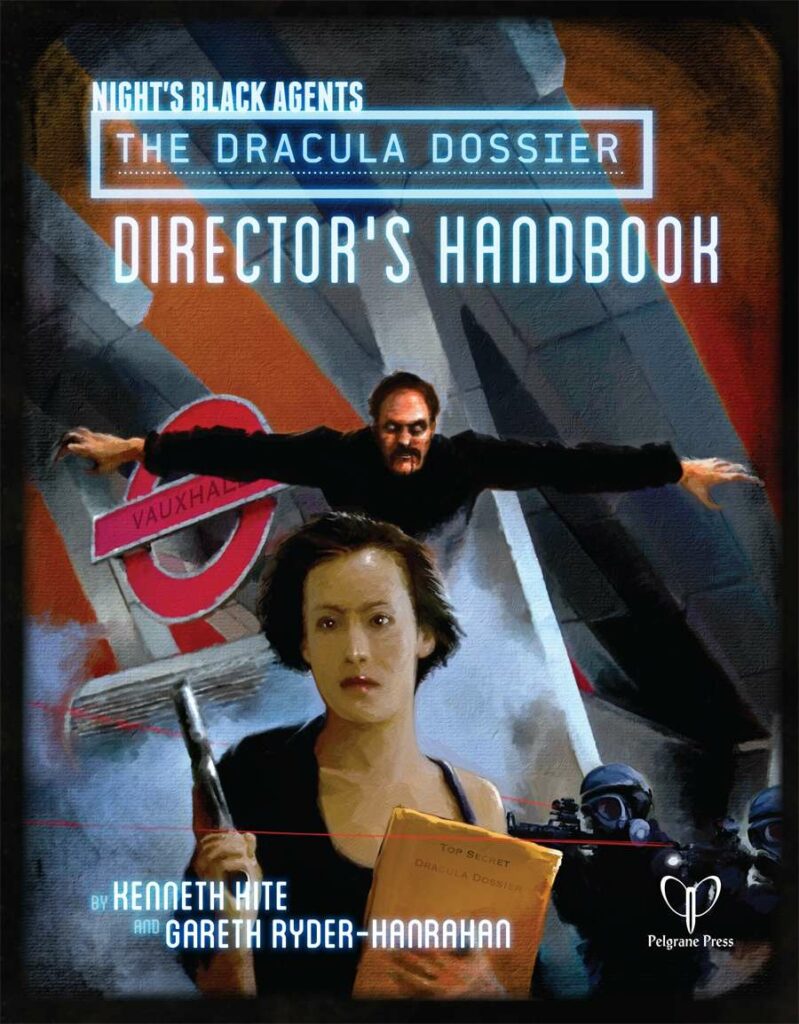In my A Game Per Year project, my goal has been to read one roleplaying game corebook for every year they’ve been published. However, I soon started to feel that it was hard to decipher how the games were really meant to be played. For this reason, I decided to start a parallel project, An Adventure Per Year, to read one roleplaying adventure for each year they’ve been published.

The Dracula Dossier is a campaign published for the vampire espionage roleplaying game Night’s Black Agents. In scope an ambition, its dwarfs its parent game, becoming a small family of releases in its own right. At the core is Director’s Handbook, the campaign manual for the GM, called Director in Night’s Black Agents.
The concept is that Bram Stoker’s novel Dracula is actually a redacted intelligence operations report, released to the public for misinformation purposes. The player characters are intelligence agents who have become aware of the vampire menace. As per Night’s Black Agents, they’ve gone rogue with the goal of putting an end to vampires by themselves.
At the start of the campaign, they get an unredacted version of the novel with annotations by three generations of agents from the covert British spy organization Edom, which has a sinister agenda of its own. This book actually exists, published as an accessory for the campaign under the title Dracula Unredacted.
This means that at the start, the player’s have an entire novel’s worth of clues to start from.
As a published roleplaying campaign, The Dracula Dossier is extremely impressive. Its scope is massive, its ambitious and original. Structurally, its based on the idea of the Conspyramid in the core game. The pyramid models the characters’ investigation, with elements such as locations and organizations slotting onto different levels, triggering various effects.
The idea is that the structure of the campaign is provided by the pre-created pyramid, so that all the campaign material can be put into place on the fly, improvisationally. There are no pre-planned scenes or progressions in the way of traditional roleplaying scenarios. Rather, there’s the structure (or two structures really, one for Edom and one for Dracula) and a massive collection of characters, organizations, locations and items that can be used according to the needs of the game. The book feeds the game but doesn’t control its flow. As a result, the characters can go into almost any direction from the massive trove of clues in the novel and always find something.
The approach to making Dracula the novel into espionage material is extremely thorough. There are multiple versions of each supporting character, for different allegiances and needs. Dracula’s castle alone gets a whole slew of possible locations so that the Director can tailor it to their campaign.
Even the nature of what vampires are is customizable. Here the campaign follows the idea of vampires as a mystical geomantic phenomenon, seeded in the novel but rarely followed up on by later vampire novelists and filmmakers.
In terms of style, the campaign seeks to hew close to reality, or as close as possible given the fantastical premise. Many historical characters related to European espionage are mentioned. Romania as a country has a huge role and its not limited to just a fantasy vampire castle in the mountains. Modern organized crime, the way the tourist business uses Dracula to draw visitors and the stray dogs of Bucharest all get their due.
Due to its sheer heft, Director’s Handbook is not easy to get through, but it is a towering work in the field of roleplaying.